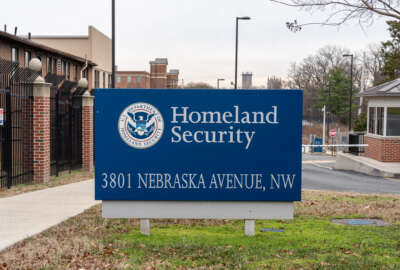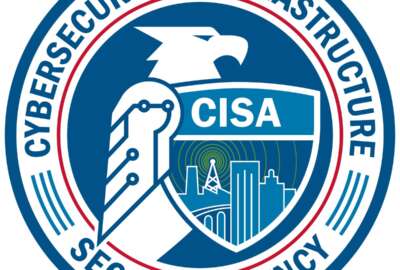GSA finishes cloud email migration
The General Services Administration has become the first federal agency to move its entire workforce to a cloud-based email product. GSA said it moved all 17,000 of...
wfedstaff | June 4, 2015 9:18 am
By cloud first” push.
“In GSA, we have a motto that we have broad shoulders,” said Dave McClure, GSA’s associate administrator for citizen services and innovative technologies. “We need to be actually doing what we’re recommending other agencies do.”
GSA is using Google’s Apps for Government, though McClure said it’s not just your run-of-the-mill Gmail.
“When people hear that an organization has moved to Google, they assume it’s the same product that’s sitting on your desktop at home or your mobile device,” McClure said. “And while we call it a public cloud solution, that thing is wrapped around all the security requirements and privacy requirements that the federal government wants us to put in place. Therein lies the lesson for implementation. Trying to get cloud products to meet all of those requirements is indeed an interesting exercise.”
McClure spoke Wednesday at a Capitol Hill cloud forum hosted by senators Tom Carper (D-Del.) and Scott Brown (R-Mass.), where he said GSA will cut its costs for email roughly in half, for a total of a little over $15 million in five-year savings.
Along with email, GSA employees and contractors will get video chat and document-sharing capabilities, according to Unisys, GSA’s contractor on the project. The system also integrates mobile devices, which McClure said was a hurdle in and of itself.
“Our biggest challenges were the devices called the BlackBerries,” McClure said. “Getting those into a Gmail environment has been done by Google and others, but not at this scale. There were tremendous lessons learned on how that has to be done with some efficiencies.”
GSA and Unisys have been working on the project since December, when the contract was awarded. McClure said most of that time was spent preparing users and systems for the change, not actually moving users into Google’s cloud. The changeover itself, he said, happened all at once.
“We actually went one day from Lotus Notes, and on Monday at 7 a.m., the entire GSA organization across the nation went to Gmail,” he said. “It was preceded by countless hours of preparation, training, on-the-ground help vehicles being set up. It was really a concerted exercise to make it, from a user perspective, less threatening and more beneficial. Less than one percent of our users actually experienced serious problems in going into the Gmail system. That’s pretty remarkable, and it shows you that the countless hours that went into preparing for that system is really the key to success.”
GSA is certainly not alone in seeing email as a ripe target for moving to the cloud. GSA says 15 agencies have identified almost one million federal email accounts they want to move to the cloud, out of 100 different legacy email systems.
Twenty-seven of those systems are at the Agriculture Department. USDA already is in the middle of one of the government’s biggest cloud migrations. About 75,000 employees have already moved to the new Microsoft-based cloud, and Chris Smith, USDA’s chief information officer, said the rest of their 120,000 users will be switched over within the next two months.
“It’s been complex, and it took us a lot longer than we expected to make this happen, even with one of the premier partners on the globe,” Smith said. “It took probably three months more planning than we had anticipated, but once we started moving at velocity, we were moving about 2,000 {accounts} a night. Once the wrinkles are taken out of it, it’s a pretty straightforward trajectory.”
USDA expects to cut its per-user email cost from about $150 to around $100. Vivek Kundra, the federal chief information officer, said at the forum that just moving USDA and GSA email services to the cloud will save $42 million per year.
Another big department following behind them will be the Department of Homeland Security. DHS plans to move 100,000 users to a private cloud housed in two of its own enterprise data centers and will cut its email costs from $300 per user to $100.
Kundra said although email and collaboration have been an early focus of the government’s move to cloud technology, there are other areas that are ripe for change. He said the next group of procurements the federal government will be putting out will be centered on agency financial systems.
“We want to move our financial systems, where we’ve been spending around $30 billion in lifecycle costs over to the cloud, so we can cut those costs significantly,” Kundra said. “If you look at the landscape of federal IT and fast forward three years from now, it’s going to be fundamentally different. There are going to be winners and losers, as there should be. What we want to do is introduce Darwinian pressure into this market. To make sure that companies that are winning government IT contracts are not winning them because they’ve mastered the federal procurement process, but because they provide real value. Every agency should demand that the day they sign a deal on a technology contract, they’re getting value on day one. We shouldn’t have to wait 12 years, spend a billion dollars and find out we’re getting negative value.”
The federal government spends roughly $80 billion per year on IT. Kundra, who will soon leave the government for a post at Harvard, has told agencies to begin finding savings by moving at least three technologies to the cloud by next year.
RELATED STORIES:
OMB teeing up financial, HR systems for the cloud
Data center consolidation ahead of schedule
Kundra seeks broader vendor pool
(Copyright 2011 by FederalNewsRadio.com. All Rights Reserved.)
TAG: Technology | GSA | USDA | DHS | cloud computing | Vivek Kundra | Dave McClure | Chris Smith | contracting | Google | Unisys | Jared Serbu
Copyright © 2025 Federal News Network. All rights reserved. This website is not intended for users located within the European Economic Area.





